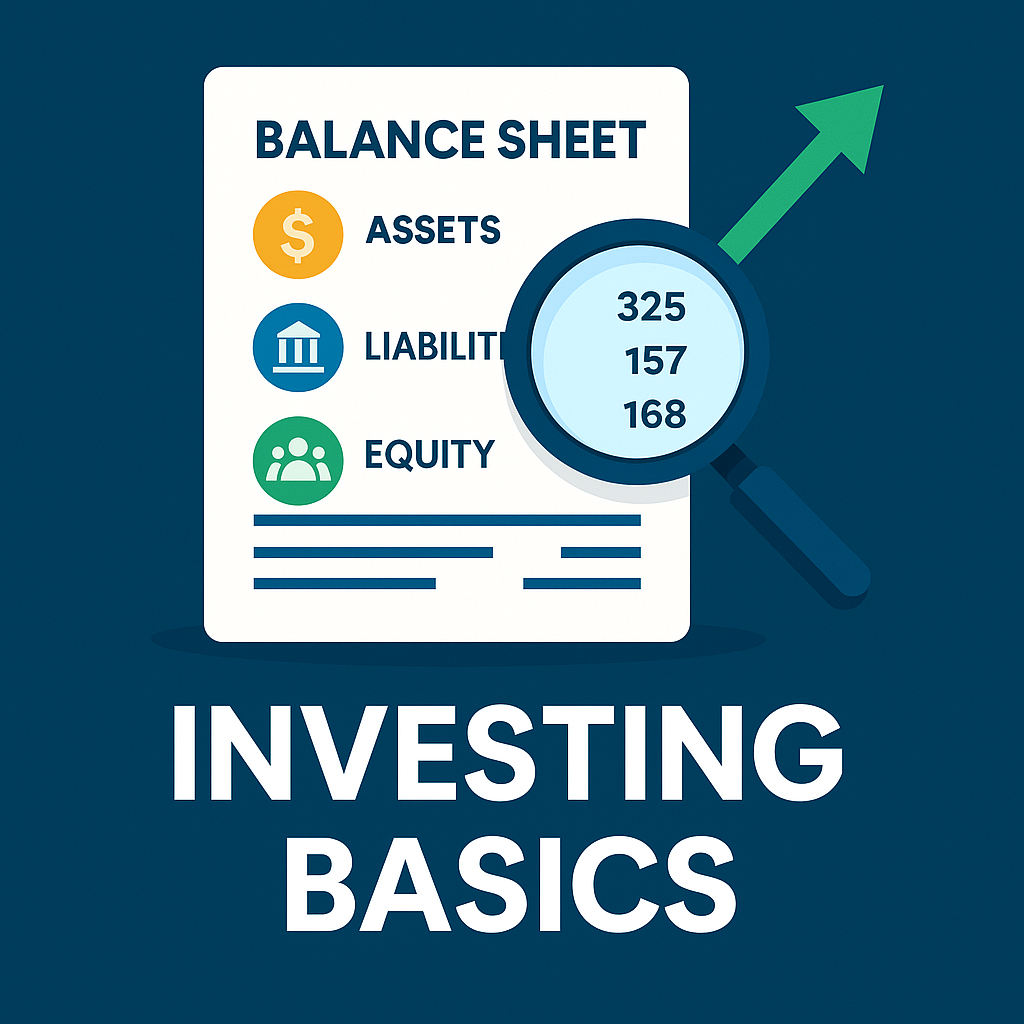Surprising fact: a few large names on the NSE screen show yields above 6%, and one firm posts double-digit yield snapshots—numbers that can reshape an investor’s cash flow view.

The recent market swings have many seeking steady payouts and some hedge against inflation. This roundup explains why regular distributions can add stability to a core portfolio while still letting a stock capture capital gains.
We preview a curated list that includes household names such as ITC, Coal India (~6.7%–6.9% yield), Hindustan Zinc (~6.6%), ONGC (~5.1%–5.2%), Power Grid, Infosys/HCL Tech and NTPC. Each company is evaluated for yield, payout health, ROE and balance-sheet strength.
Expect practical guidance: what to watch on ex-dates, valuation limits, and sector risks so you can turn this list into a repeatable investment approach.
Key Takeaways
- High-yield names can cushion returns during volatile market swings.
- Focus on payout consistency, payout ratios and free cash flow for durability.
- Blend companies across sectors—energy, metals, utilities and IT—for balance.
- Yield snapshots give a starting point, but monitor price and announcements.
- Use valuation discipline and a monitoring checklist before committing capital.
Why Dividend Investing Looks Attractive in 2025
Rising volatility and rate shifts in 2025 have pushed many investors to value steady cash flows over short-term gains. A focus on payouts can add a layer of predictability when price moves get unpredictable.
The Nifty 50’s overall yield remains modest at roughly 1–2%, yet select sectors—mining, metals, energy and power—show higher, more reliable returns. Targeted exposure to these areas can lift portfolio income without chasing excessive risk.
Market volatility and the case for steady cash flows
Elevated uncertainty and episodic drawdowns make steady payouts valuable as a buffer against swings. Dividends contribute to total return even when price growth is muted, giving investors cash to spend or reinvest.
- Inflation hedge: companies that raise distributions over time help preserve purchasing power better than idle cash.
- Diversification: owning quality payers across sectors reduces reliance on a few growth leaders for overall stability.
- Durability: sustainable payouts usually come from firms with recurring demand, healthy balance sheets, and prudent capital allocation.
Stay focused on payout sustainability, not just headline yield, and pair dividend picks with disciplined monitoring and reinvestment plans.
Passive Income Plus Growth: Dual Benefits of Dividend Stocks
Good portfolios often blend steady cash flow with long-term capital gains. That mix gives investors both regular payouts and the chance for the stock to rise as the business strengthens.

Regular income through payouts
Regular distributions create predictable cash that can support budgets or be reinvested. Reinvesting during dips helps compound returns over time.
Potential capital appreciation from quality companies
Quality firms with pricing power and healthy margins can grow earnings and lift valuations. That growth can add meaningful upside to the steady yield.
“Consistent payments often signal management confidence in cash flow durability.”
- Mix moderate-yield, high-quality names with a few higher-yield public firms for balance.
- Watch payout ratios and free cash flow to ensure sustainability.
- Diversify across sectors to reduce cycle risk.
| Feature | Income Focus | Growth Focus |
|---|---|---|
| Primary benefit | Reliable cash | Capital appreciation |
| Typical companies | Utilities, PSUs | IT, consumer leaders |
| Key metric | Yield & payout ratio | ROE & earnings growth |
| Best use | Monthly cash needs | Long-term wealth building |
How We Selected the Best Dividend Stocks for This Product Roundup
We combined data-driven screens with hands-on checks to find durable payers. First, we scanned a Nifty 500 universe to surface high dividend yield names. Then we drilled into company filings and recent cash flows to confirm payout sources.
Focusing on yield, payout ratio, and consistency
Priority went to firms with steady distributions and sensible payout ratios. We removed names with one-off special payouts or yields driven by sharp price drops.
Screening for fundamentals: ROE, PE, and debt
We used ROE to test profit quality, PE to limit valuation risk, and debt metrics to ensure dividends came from operations. Typical filters mirrored common screeners: yield >5%, PE <20, market cap > Rs 50 bn, and positive profits for three years.
Cross-checking sector resilience in 2025
Sector context mattered. Power, energy, and mining showed higher payouts, while IT offered steadier cash flow. Governance flags, promoter pledge checks, and auditor notes trimmed risky names.
| Step | Key Filter | Why it matters |
|---|---|---|
| Initial screen | High dividend yield | Surfaces income candidates |
| Quality checks | ROE, PE, debt | Ensures sustainable performance |
| Governance review | Promoter pledge & auditor notes | Limits hidden balance-sheet risk |
| Final cross-check | Free cash flow coverage | Confirms ability to fund payouts |
Key Factors to Consider Before Buying Dividend Stocks
A simple pre-buy checklist helps you weigh yield appeal against durability and growth potential.
Dividend yield: Treat the headline number as a starting point. An unusually high yield can reflect a collapsing share price or one-off payouts rather than recurring strength.
Payout ratio and sustainability: Check the ratio versus earnings and free cash flow. Extremely high payouts may limit reinvestment and raise the odds of cuts in downturns.
History and consistency: A multi-year history of steady distributions across cycles signals management commitment and resilient cash conversion.
Company fundamentals and growth: Probe revenue visibility, margin trends, balance-sheet strength, and capex needs. Firms with clear growth levers are more likely to raise payouts sensibly.

- Treat yield as a clue, not proof.
- Verify payouts are covered by free cash flow after capex.
- Compare sector norms; utilities and IT have different benchmarks.
- Watch governance, one-off specials, and leverage.
“Focus on total return: yield plus realistic growth matters more than a single attractive number.”
Top Dividend Paying Stocks in India 2025: Curated List
This curated selection pairs high-yield public firms with quality compounders for a diversified approach.
ITC Ltd — FMCG leader with consistent payouts
ITC offers diversified products across cigarettes, FMCG, and hotels. Its steady cash flow and prudent capital allocation support reliable shareholder returns.
Coal India — PSU with high yield and government backing
Coal India posts yields near ~6.7%–6.9% (TickerTape / Equitymaster). Government ownership and thermal demand underpin cash flow, though commodity cycles can swing results.
Hindustan Zinc — strong payouts from metals
Hindustan Zinc (~6.6% yield) delivers robust distributions when metal cycles are favorable. Watch commodity volatility and cost trends as key risks.
ONGC — energy major with stable distributions
ONGC shows yields around ~5.1%–5.2%. Upstream cash generation supports steady returns, while capex and crude swings affect outlook.
Power Grid — regulated transmission income
Power Grid offers visible cash flows from regulated tariffs, making it a stability play for conservative shareholders.
Infosys / HCL Tech — IT services leaders
Both firms show moderate yields (HCL Tech ~4.24%, TCS ~4.13% noted) and strong balance sheets. They combine payouts with growth in services and products.
NTPC — power and renewables exposure
NTPC blends regulated returns with a growing renewables push. It suits investors seeking steady distributions plus long-term transition optionality.
- Why this mix: balances higher-yield PSUs and metals with quality FMCG and IT companies.
- Risk cues: commodity cycles, capex needs, and regulatory shifts—size positions accordingly.
“Favor names where payouts are covered by operations and capital allocation supports both shareholders and growth.”
Dividend Yield Snapshots from Recent Market Data
Recent market snapshots show clear sector splits in yield, with PSUs and metals well ahead of IT names. Below are compact, current-range figures to set expectations when you compare price and declared payouts.

Mid-6% range: Coal India & Hindustan Zinc
Coal India has hovered near 6.75%–6.9% on TickerTape and Equitymaster screens. Hindustan Zinc sits around ~6.6%, benefiting from strong metal-cycle cash flows.
Around 5%: ONGC and energy names
ONGC shows yields close to 5.1%–5.23%, reflecting upstream cash and crude price sensitivity. These figures move with commodity swings and capex cycles.
4–5%: Power and regulated utilities
Transmission and power-linked names typically cluster in the 4–5% band. Actual yields change as market price and declared dividends shift.
2–4%: IT services leaders
Major services firms like HCL Tech and TCS sit in the ~2–4% range (HCL ~4.24%, TCS ~4.13% noted), offering moderate yield plus balance-sheet strength.
- Reminder: yield is a moving target tied to price—refresh your data before acting.
- Tip: blend higher-yield PSUs with moderate-yield services to diversify sector risk.
Company Deep Dives: What to Like and What to Watch
This section drills into four companies to show clear strengths and the key risks that can flip a payout outlook. Each mini-profile notes operational drivers, balance-sheet context, and the main performance triggers to track.
Coal India
What to like: Leading production scale (FY25 production ~781 MT), low leverage, and tight cost control support robust cash flow and an attractive payout (~6.9%).
What to watch: Coal pricing, thermal demand links, and execution on 3 GW solar and first‑mile logistics upgrades that can improve margins.
Hindustan Zinc
What to like: Efficient operations and a strong balance create steady cash generation; favorable zinc cycles can boost performance and distributions (~6.6% yield).
What to watch: Commodity volatility and capex swings—prices falling can quickly pressure payout coverage.
ONGC
What to like: A strategic oil and gas company with ~5.13% yield and ROE near 13%. A Rs 1 tn capex plan into deepwater, EOR, and offshore wind diversifies future production and earnings.
What to watch: Crude and gas price swings, upstream cost inflation, and project execution on large investments that affect free cash flow.
Power Grid
What to like: Regulated transmission returns, national grid importance, and a disciplined balance sheet yield predictable cash flow (typical range ~4–5%).
What to watch: Tariff revisions, policy shifts, and the timing of capex and debt tied to new projects.
| Company | Key Metric | Focus |
|---|---|---|
| Coal India | Production 781 MT / PE ~7.2 | Volume, logistics, solar rollout |
| Hindustan Zinc | Yield ~6.6% | Commodity cycles, capex |
| ONGC | Yield ~5.13% / PE ~8.4 | Deepwater projects, oil & gas prices |
| Power Grid | Regulated returns | Tariffs, project pipeline |
Practical rule: prioritize free cash flow coverage over a single headline payout. Track production volumes for miners and commodity realizations for metals and oil as early indicators of future company distributions.
Sector Lens: Where High Dividends Often Live
Different sectors show distinct payout patterns that matter when you build an income-focused portfolio.

Mining and metals: cash generation vs. cyclicality
Mining and metals can generate large cash flows during upcycles, which supports strong dividend distribution.
But prices and demand swing sharply. Track production metrics and commodity trends to avoid surprise cuts.
Energy and oil & gas: payout potential in 2025
Energy and oil & gas names often offer solid payouts tied to commodity bands and operating efficiency.
Companies with diverse assets and low-cost positions can defend distributions when prices fall.
Utilities and PSUs: stability and policy influence
Utilities and public-sector firms deliver steady cash via regulated returns. That stability appeals to conservative investors.
Policy shifts and tariff orders can change payout capacity quickly, so follow regulatory updates.
IT services: moderate yield with growth visibility
IT services firms usually show moderate yields but strong balance sheets and deal pipelines.
They suit investors who want smoother payouts plus growth potential.
- Blend mining, energy, utilities, and services to spread risk across sectors.
- Monitor production, capex cycles, and distribution policies for each company.
- Use a sector dashboard (commodity prices, tariff orders, deal wins) to anticipate changes in payout capacity.
“Sector dispersion helps lift overall yield while tempering drawdowns tied to any single economic driver.”
dividend paying stocks India 2025 passive income from stocks best dividend comp
Start with a rules-based screen, then verify coverage with cash flow and balance-sheet checks. This step keeps you focused on durable payers rather than chasing one-off yields.
Use yield as a filter, but confirm that earnings and free cash flow cover distributions. Favor firms with a history of steady payouts and clear capital plans.
Diversify by sector—mix energy or metals that generate structural cash with FMCG and IT names that offer resilience. That lowers concentration risk and smooths volatility in the market.
- Create a watchlist and set alerts for corporate actions and ex-dates to act efficiently.
- Blend moderate-yield compounders with a few higher-yield public-sector names for balance.
- Reinvest some payouts to harness compounding while keeping cash for near-term needs.
“Track valuation and tax impact; discipline on price improves the durability of total returns.”
Document your selection rules and review quarterly. Investors who stay systematic and responsive to rate, inflation, and policy shifts can convert steady payouts into a reliable cash-flow plan.
Sample Portfolio Ideas for Passive Income in India
Build a simple, sector-aware portfolio that blends steady public-sector payers with consumer names and IT to smooth returns.
Core allocation to PSUs and utilities: anchor your plan with transmission and power firms. These companies often deliver predictable cash and steady payouts that stabilize a portfolio.
Energy for yield and upside: add ONGC or a similar energy name for mid-single-digit payouts and exposure to commodity cycles. Size this slice conservatively to limit volatility.

FMCG for durability
Include a consumer business such as ITC to gain resilient cash flow across cycles. These firms often sustain payouts and help preserve capital during downturns.
Adding IT for stability and growth
Layer in Infosys or HCL Tech to marry modest yield with strong balance sheets and long-term growth potential. This mix reduces sector concentration and lifts total returns.
- Consider a selective metals/mining holding to lift headline yield, but limit exposure to cyclicality.
- Keep a cash buffer or short-term debt sleeve to manage timing around ex-dates without forced selling.
- Reinvest part of distributions to compound, while withdrawing a set share for living needs.
- Rebalance to maintain target weights and replace companies that cut payouts without recovery plans.
“Aim for balance over chasing yield: evaluate total returns annually, not just payout numbers.”
Risk Management: Don’t Chase Yield Blindly
A headline payout can mislead unless you check the cash behind it. Look beyond the number to confirm coverage and business health before you commit capital.
Dividend cuts and price drawdowns
Chasing the highest returns can backfire when companies cut distributions. Cuts often coincide with steep price drops, compounding losses for holders.
Commodity exposure and policy risks
Firms tied to commodity cycles can see earnings compress fast. Policy shifts in public entities may also change allocated cash, reducing what reaches shareholders.
Interest rate sensitivity and valuation traps
Rising rates can depress market multiples and make yields look less attractive versus safer alternatives. Beware low PE ratios that reflect cyclical peak earnings rather than sustainable profit.
- Check coverage: free cash flow after capex and the payout ratio.
- Diversify across sectors and multiple stocks to limit single-cut impact.
- Set business-based review triggers, not only stop-loss price points.
- Document position limits, sector caps, and re-entry rules before buying.
“Focus on durable cash coverage and valuation discipline to protect total returns.”
How to Research Dividend Yield Stocks Like a Pro
Good research starts with a repeatable screener and ends with a close read of company cash flow. Use tools to narrow candidates, then verify the numbers in filings to build real conviction.

Use screeners and verify financials
Begin with filters: run a yield screen on TickerTape or Equitymaster. Layer PE, market cap, ROE and promoter-pledge checks to remove risky names.
Then validate: open annual reports and confirm free cash flow covers declared dividends after capex and working capital.
Track payout trends, ROE, and debt
Track at least five years of payout history to spot increases, cuts, or special payouts. Check the payout ratio versus earnings and cash.
- Use ROE to judge earnings quality; steady high ROE with moderate leverage is a plus.
- Scrutinize debt maturities and interest coverage so rising rates do not pressure distributions.
- Compare peers in the same market sector to set realistic expectations.
“A short list backed by statement checks beats a long list of unvetted names.”
Taxes on Dividends in India: What Changed and What Matters Now
Tax rules have reshaped how payouts land in retail pockets and require fresh planning.
Since April 1, 2020, the Finance Act moved taxation of dividends to the hands of the recipient. The old corporate-level levy (DDT) was removed and Section 115BBDA was withdrawn.
Post-2020 regime: how investors are taxed
Under the current law, dividend payments are taxable at the investor’s applicable slab rate. That means your personal bracket determines the effective tax on each distribution.
TDS, slab rates, and cash-flow planning
- Companies may deduct TDS when payouts exceed specified thresholds—reconcile credits so you avoid surprises at filing time.
- Treat posted yield as pre-tax; your realized income will depend on your slab and any TDS credits.
- Keep records of interim and final dividends and consolidate statements across demat accounts to ease reporting.
- Mutual fund dividends follow the same rule; compare distribution versus growth options for tax efficiency.
“Plan payouts around your cash needs rather than timing trades just for a payout—prices usually adjust on the ex-date.”
For complex portfolios or cross-border cases, consult a tax professional to ensure full compliance and efficient planning.
When to Buy: Timing, Price, and Dividend Dates
Smart entry timing blends calendar awareness with valuation and clear research. Buying for a payout alone can backfire if the price moves more than the cash you receive. Aim to buy at a fair value, not just before a record date.
Ex-dividend dates and total return focus
Understand ex-dates: purchase before the ex-date to qualify for the payout, but expect the stock price to adjust downward roughly by the payout amount.
Focus on total return. Chasing a single payout without watching price and fundamentals often erodes overall gains.

Valuation discipline in volatile markets
Use pullbacks in a volatile market to pick quality names at better price levels. Set entry ranges based on fair-value research, not the next calendar event.
- Build positions in tranches to manage time risk and new information.
- Track corporate calendars for board meetings and payout announcements.
- Compare current yield to the stock’s historical band; investigate sudden spikes before adding.
- Document buy/sell rules and revisit them after earnings or guidance changes.
“Prioritize total return and valuation discipline over short-term calendar plays.”
Building a Dividend Strategy for 2025 and Beyond
Start by mapping a clear cash target and working backward to build a mix that fits your time frame and risk appetite.
This helps you set weights for each sector and choose how much to reinvest versus withdraw. A simple plan reduces emotional trading and keeps focus on long-term goals.
Diversification across sectors and payout profiles
Map your income target, then spread allocations across utilities/PSUs, energy, FMCG, and IT services to smooth flows.
Balance higher-payout names with moderate-yield compounders so the portfolio gains both steady cash and long-term growth potential.
Reinvestment vs. cash needs for passive income
Decide a fixed split: what percent you reinvest automatically and what percent you take as cash for monthly needs.
- Revisit the payout mix annually to reflect policy and sector cycles.
- Set position limits and sector caps to avoid hidden concentration risk.
- Model scenarios under different yield and price moves to test resilience.
- Keep an emergency reserve so distributions are not your only cash lifeline.
“Align rules on reinvestment and withdrawals with your broader financial plan and tax situation.”
Conclusion
When markets wobble, a focus on companies that generate real cash and return it to holders pays off over time. This list is a starting point for investors who want steady payouts while keeping growth optionality.
Do the work: use crisp research, check coverage versus free cash flow, and test leverage and capital-allocation discipline before you commit.
Blend sectors—FMCG, PSUs, energy, metals, utilities and IT—to smooth cycles. Time entries by valuation and focus on total returns, not only the next ex-date.
With patience and a checklist-driven process, a well-built approach to dividend and stocks selection can help deliver durable returns for investors in stocks india 2025 and beyond.
FAQ
What makes dividend-focused investing attractive for Indian investors in 2025?
Reliable cash distributions from mature companies can smooth returns during market swings. In 2025, many public sector units and large-cap corporates show steady free cash flow, which supports regular payouts and reduces reliance on pure capital gains.
How should I weigh yield versus safety when selecting payout-oriented shares?
A very high yield can signal risk. Compare yield with payout ratio, earnings stability, and debt levels. Aim for firms with sustainable payout ratios, healthy ROE, and consistent cash generation rather than chasing the top percentage alone.
Which sectors typically offer stronger payout profiles?
Utilities, energy, mining, and some FMCG names often return more cash to shareholders. These sectors generate steady cash flows, though they carry cyclic or policy risks that investors must monitor.
Are PSU companies safer choices for regular cash distributions?
Many PSUs have strong balance sheets and government support, which can underpin payouts. However, operational efficiency, commodity cycles, and regulatory changes still affect returns, so evaluate each company on fundamentals.
How important is payout history when choosing companies?
Very important. Companies that maintain or grow distributions through business cycles demonstrate management commitment and financial resilience. Track at least five years of payout trends to verify consistency.
What role does the payout ratio play in assessing sustainability?
Payout ratio shows earnings portion returned as cash. Extremely high ratios may be unsustainable if earnings fall. Look for moderate ratios that leave room for reinvestment and debt servicing while still returning value to shareholders.
How do ex-dividend and record dates affect buying decisions?
You must hold shares before the ex-dividend date to receive the next distribution. But focusing only on dates can lead to poor timing. Evaluate total return potential—income plus capital appreciation—rather than chasing short-term payout events.
What tax considerations should investors in India keep in mind?
Dividends are taxed in the investor’s hands and may be subject to TDS. Rates depend on your tax slab and domicile. Factor net yield after taxes into portfolio planning and consult a tax advisor for specific situations.
Can technology and IT services stocks fit into an income-focused plan?
Yes. Large IT firms such as Infosys and HCL Technologies tend to offer moderate payouts while still growing. They provide balance—steady cash with scope for capital appreciation—making them useful in diversified income portfolios.
How often should I rebalance an income-oriented portfolio?
Rebalance at least annually or after major market moves. Review payout changes, sector exposure, and company fundamentals. Rebalancing keeps allocation aligned with income goals and risk tolerance.
What metrics beyond yield should I track for each company?
Monitor return on equity, free cash flow, debt-to-equity ratio, earnings growth, and payout consistency. Also review management commentary on capex, dividends, and sector outlook to anticipate future distributions.
How can an investor guard against dividend cuts and price drops?
Diversify across sectors, favor companies with strong cash flow and low leverage, and avoid overpaying by checking valuations. Keep an emergency fund and a long-term horizon to ride out short-term cuts.
Is it better to reinvest distributions or take cash for household income?
It depends on goals. Reinvesting compounds returns and accelerates wealth accumulation. Taking cash suits those seeking regular household income. Many investors use a hybrid approach to balance growth and cash needs.
How can I research payout candidates efficiently?
Use market screeners to filter by yield, payout ratio, ROE, and debt. Read quarterly reports, check cash flow statements, and follow sector news. Combine quantitative filters with qualitative checks on management and strategy.
What are common pitfalls when building an income portfolio in the current market?
Chasing yield without checking fundamentals, overconcentration in one sector, ignoring tax impacts, and neglecting valuation are frequent mistakes. Stick to a disciplined process and focus on long-term total return.










